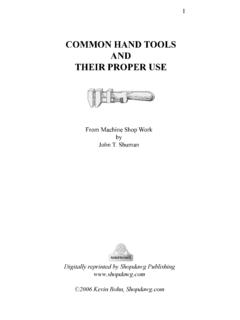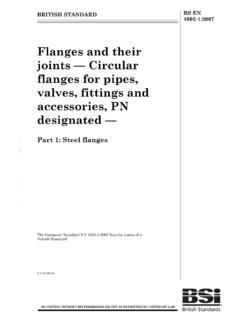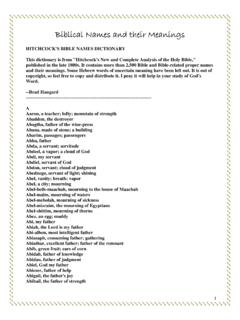Transcription of PHYTOSTEROLS, PHYTOSTANOLS AND THEIR ESTERS …
1 phytosterols , PHYTOSTANOLS and THEIR ESTERS (CTA) 2008 - Page 1(13) phytosterols , PHYTOSTANOLS AND THEIR ESTERS Chemical and Technical Assessment Prepared by Richard Cantrill, , reviewed by Yoko Kawamura, , for the 69th JECFA1 1. Summary phytosterols and PHYTOSTANOLS , also referred to as plant sterols and stanols, are common plant and vegetable constituents and are therefore normal constituents of the human diet. They are structurally related to cholesterol, but differ from cholesterol in the structure of the side chain. Commercially, phytosterols are isolated from vegetable oils, such as soybean oil, rapeseed (canola) oil, sunflower oil or corn oil, or from so-called "tall oil", a by-product of the manufacture of wood pulp.
2 These sterols can be hydrogenated to obtain PHYTOSTANOLS . Both phytosterols - and stanols, which are high melting powders, can be esterified with fatty acids of vegetable (oil) origin. The resulting ESTERS are liquid or semi-liquid materials, having comparable chemical and physical properties to edible fats and oils, enabling supplementation of various processed foods with phytosterol- and phytostanol ESTERS . The most common phytosterols and PHYTOSTANOLS are sitosterol (3 -stigmast-5-en-3ol; CAS Number 83-46-5), sitostanol (3 ,5 -stigmastan-3-ol; CAS Number 83-45-4), campesterol (3 -ergost-5-en-3-ol; CAS Number 474-62-4), campestanol (3 ,5 -ergostan-3-ol; CAS Number 474-60-2), stigmasterol (3 -stigmasta-5,22-dien-3-ol; CAS Number 83-48-7) and brassicasterol (3 -ergosta-5,22-dien-3-ol; CAS Number 474-67-9).
3 Each commercial source has its own typical composition. Dietary intake of phytosterols ranges from 150-400 mg /day in a typical western diet. phytosterols and PHYTOSTANOLS , in free or esterified form, are added to foods for THEIR properties to reduce absorption of cholesterol in the gut and thereby lower blood cholesterol levels. It is now generally accepted that sterols and stanols have the same cholesterol lowering efficacy. The daily doses, considered optimal for the purpose of lowering blood cholesterol levels, are 2-3 g of PHYTOSTANOLS and/or phytosterols , which translates to g in esterified form. This recommended daily dose is typically divided in 1-3 portions of food providing g ester, which equals 1-3 g phytostanol and/or phytosterol equivalents.
4 phytosterols , PHYTOSTANOLS and THEIR ESTERS have not been evaluated previously by the Committee. However, these substances have been evaluated and approved for use in foods in a number of countries world-wide (the European Union, Australia, Switzerland, Norway, Iceland, Brazil, South Africa, Japan, Turkey and Israel). Furthermore, in the USA a self-GRAS (GRAS = Generally Recognized As Safe) procedure has been followed for both phytosterols - and PHYTOSTANOLS , to which the US FDA raised no objections. 2. Description phytosterols and PHYTOSTANOLS are a large group of compounds that are found exclusively in plants. They are structurally related to cholesterol but differ from cholesterol in the structure of the side chain.
5 They consist of a steroid skeleton with a hydroxyl group attached to the C-3 atom of the A-ring and an aliphatic side chain attached to the C-17 atom of the D-ring. Sterols have a double bond, typically between C-5 and C-6 of the sterol moiety, whereas this bond is saturated in PHYTOSTANOLS . (Figure 1). 1 This document is based primarily on a draft CTAs and other information provided by the following sponsors: Raisio Nutrition Ltd, Raisio, Finland; Bioresco Ltd., Basel , Switzerland, on behalf of Forbes Medi-Tech Inc., Vancouver, BC, Canada; Unilever UK, London, United Kingdom. phytosterols , PHYTOSTANOLS and THEIR ESTERS (CTA) 2008 - Page 2(13) Figure 1.
6 Steroid skeleton Figure 2. Molecular structure of some phytosterols , PHYTOSTANOLS and a fatty acid ester. The most common phytosterols and PHYTOSTANOLS (examples of structures are shown in Figure 2) are sitosterol (3 -stigmast-5-en-3ol; CAS Number 83-46-5), sitostanol (3 ,5 -stigmastan-3-ol; CAS Number 83-45-4), campesterol (3 -Ergost-5-en-3-ol; CAS Number 474-62-4), campestanol (3 ,5 -ergostan-3-ol; CAS Number 474-60-2), stigmasterol (3 -stigmasta-5,22-dien-3-ol; CAS Number 83-48- phytosterols , PHYTOSTANOLS and THEIR ESTERS (CTA) 2008 - Page 3(13) 7) and brassicasterol (3 -ergosta-5,22-dien-3-ol; CAS Number 474-67-9). Each commercial source has its typical phytosterols composition (see further section 4, Table 2).
7 Commercially, phytosterols are isolated from vegetable oils, such as soybean oil, rapeseed (canola) oil, sunflower oil or corn oil, or from so-called "tall oil", a by-product of the manufacture of wood pulp. phytosterols can be hydrogenated to obtain PHYTOSTANOLS . phytosterols and PHYTOSTANOLS are high melting powders. Phytostanol and phytosterol ESTERS are chemically stable materials, having comparable chemical and physical properties to edible fats and oils. The substances are insoluble in water, but soluble in non-polar solvents, such as hexane, iso-octane and 2-propanol. The ESTERS are also soluble in vegetable fats and oils. Three separate dossiers on different commercially available materials were submitted to the committee for the assessment of the phytosterols , PHYTOSTANOLS and THEIR ESTERS .
8 A. phytosterols , PHYTOSTANOLS and ester mixtures thereof, derived from vegetable oil distillates b. Unesterified phytosterol and phytostanol mixtures derived from tall oil. Main constituents were sitosterol (40-65%), sitostanol (16-31%), campesterol (6-15%) and campestanol ( ). c. Phytostanol ester mixtures derived from either tall oil (stanol composition: about 94% sitostanol and about 6% campestanol), or vegetable oil (stanol composition: about 68% sitostanol and about 32% campestanol). 3. Manufacturing Production of sterols from vegetable oil distillates Edible vegetable oils, extracted from oil seeds, are typically refined to remove minor oil components like phosphatides, free fatty acids, pigments and odours, with the least possible damage to the glycerides and with minimal loss of oil.
9 The conventional or caustic refining procedure comprises degumming, neutralization, bleaching and deodorization. In physical refining, the neutralization step is omitted and the residual free fatty acids are removed in the final deodorization step. Deodorization is the last step in the edible oil refining process in which volatiles are removed, that can cause deterioration of the oil quality during use in products (flavour, odour, colour and taste stability). This process relies on the large volatility differences between the oil itself (triglycerides) and the volatile compounds to be removed and is carried out under reduced pressure, an elevated temperature in the presence of a stripping gas. The volatiles are recovered in a vapor condenser.
10 With caustic refining the yield of volatiles distillate is approximately - on the processed oil volume. This distillate mainly contains free fatty acids, but also significant levels of tocopherols (5-15%) and phytosterols (8-20%). In a transesterification (methanolysis) step, the glycerides are converted into fatty acid methyl ESTERS and glycerol and the phytosterol- ESTERS into free phytosterols and fatty acid methyl ESTERS . After removal of the methanol/glycerol phase, the methyl ESTERS are removed and the free phytosterols and tocopherols removed by distillation. The phytosterols are separated from the tocopherols by solvent crystallization and filtration using food grade solvent. The phytosterols are further purified by re-crystallisation, mainly to remove wax- ESTERS .

















